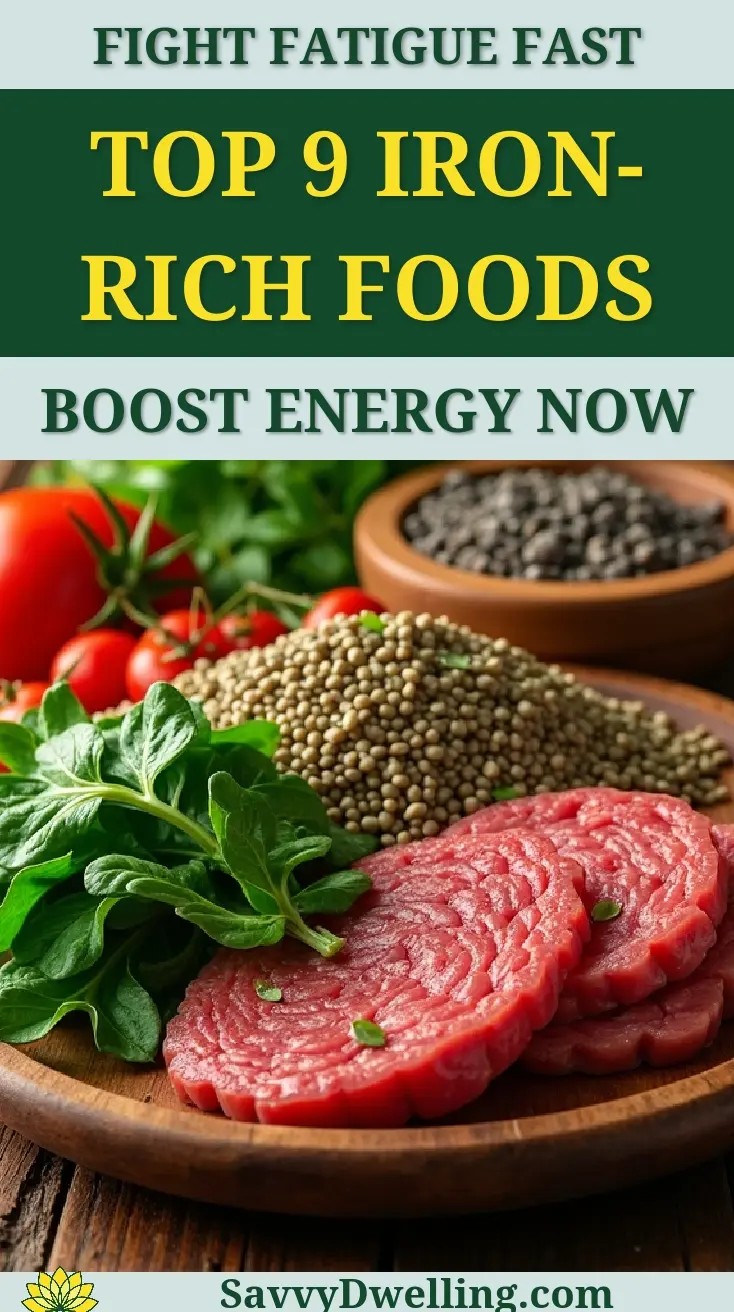A Guide to the Best Foods for Arthritis and Joint Pain: Natural Nutrition to Support Your Joints
Does morning stiffness make simple tasks feel overwhelming, or do everyday activities leave your joints aching by evening? You’re not alone in feeling frustrated when joint discomfort affects your quality of life. The constant cycle of stiffness, swelling, and pain can make you wonder if there’s anything natural that might help support your comfort and mobility.
This guide will show you exactly which foods can naturally support joint health and help soothe discomfort through targeted nutrition. We’ve researched the science behind anti-inflammatory eating and simplified it into practical, kitchen-friendly advice you can start using today. You’ll learn which specific foods work best, how they support your joints, and simple ways to incorporate them into meals you already love.
Contents
- At a Glance: The Best Solutions
- The Science Made Simple: Why This Problem Happens
- 1. Omega-3 Rich Fish: Your Most Powerful Anti-inflammatory Ally
- 2. Vibrant Berries and Cherries: Nature’s Joint Pain Soothers
- 3. Dark Leafy Greens: Essential Vitamins for Cartilage Health
- 4. Anti-inflammatory Spices and Herbs: Kitchen Medicine for Your Joints
- 5. Healthy Fats: The Foundation Of Joint-supporting Nutrition
- 6. Whole Grains and Fiber-rich Foods: Supporting Overall Inflammation Control
- 7. Hydrating Foods and Beverages: Keeping Joints Well-lubricated
- Foods That May Worsen Joint Discomfort (What to Limit)
- Common Mistakes to Avoid When Eating for Joint Health
- Frequently Asked Questions
- Final Words
At a Glance: The Best Solutions
When you’re dealing with joint discomfort, the foods on your plate can either fuel inflammation or help soothe it. These five food categories represent the most effective natural approaches to supporting your joints through nutrition.
Each category works differently but powerfully. Some reduce inflammatory markers in your bloodstream, while others provide specific nutrients your cartilage needs to stay healthy.
| Food Category | Top Examples | How They Help | Best Use |
|---|---|---|---|
| Omega-3 Rich Fish | Salmon, Mackerel, Sardines | Reduce inflammation markers | 2-3 servings per week |
| Colorful Berries | Blueberries, Cherries, Strawberries | Antioxidants combat joint stress | Daily as snacks or breakfast |
| Leafy Greens | Spinach, Kale, Swiss Chard | Vitamins support cartilage health | Include in every meal |
| Anti-Inflammatory Spices | Turmeric, Ginger, Garlic | Natural pain-soothing compounds | Season meals generously |
| Healthy Fats | Extra Virgin Olive Oil, Avocados | Support nutrient absorption | Use as primary cooking fats |
The best foods for arthritis work synergistically-meaning they’re more powerful when you combine them rather than focusing on just one. Think of this as building a comprehensive arthritis diet that addresses inflammation from multiple angles.
You don’t need to overhaul your entire eating pattern overnight. Start by incorporating one category this week, then gradually add others as these foods become natural parts of your meals.
The Science Made Simple: Why This Problem Happens
Understanding Inflammation and Joint Pain
Joint pain and stiffness happen when your body’s natural inflammatory response gets stuck in overdrive. Think of inflammation as your immune system’s fire department-it rushes to help when there’s trouble, but sometimes forgets to turn off the alarm.
In healthy joints, cartilage acts like a cushion between bones, while synovial fluid lubricates everything smoothly. When chronic inflammation sets in, this delicate system breaks down. Your joints become swollen, tender, and increasingly difficult to move comfortably.
The inflammatory process releases chemicals called cytokines that signal pain receptors throughout your joints. This creates a cycle where inflammation causes pain, and ongoing discomfort can trigger even more inflammatory responses.
How Food Affects Your Body’s Inflammatory Response
Every meal you eat either feeds inflammation or helps calm it down. Certain foods contain compounds that directly influence the production of inflammatory molecules in your bloodstream.
Processed foods high in sugar and unhealthy fats send inflammatory signals throughout your body. Meanwhile, nutrient-dense whole foods provide antioxidants and omega-3 fatty acids that actively reduce inflammation markers. Incorporating specific whole foods into your diet can bolster your health even further. Consider adding foods like berries, fatty fish, and leafy greens, which are among the top 10 foods fighting inflammation.
Research shows that people following anti-inflammatory eating patterns experience measurably less joint stiffness and pain. Your diet becomes a powerful tool for managing how your joints feel each day.
The Role Of Nutrition in Supporting Joint Health
Proper nutrition supports joint health through multiple pathways. Antioxidants neutralize free radicals that damage cartilage, while specific vitamins aid in collagen production and tissue repair.
Omega-3 fatty acids help regulate inflammatory processes at the cellular level. Vitamin C supports cartilage maintenance, and vitamin D helps your body absorb calcium for strong bones surrounding your joints.
The best foods for arthritis work synergistically-they provide building blocks for healthy joint tissue while simultaneously reducing the inflammation that causes pain. This dual approach makes dietary changes particularly effective for long-term joint support.

1. Omega-3 Rich Fish: Your Most Powerful Anti-inflammatory Ally
Why Fatty Fish Works So Well
Fatty fish contains two specific omega-3 fatty acids-EPA and DHA-that directly suppress inflammatory compounds in your body. These marine-sourced fats convert into specialized molecules called resolvins, which actively resolve inflammation rather than just blocking it.
Studies consistently show that people eating omega-3 rich fish twice weekly report less joint stiffness and reduced need for anti-inflammatory medications. The effects build over time as these beneficial fats incorporate into your cell membranes.
Unlike plant-based omega-3s, the EPA and DHA in fish are immediately usable by your body. This makes fatty fish one of the most efficient ways to deliver anti-inflammatory nutrients directly to your joints.
Best Fish Choices for Maximum Benefit
Not all fish provide equal anti-inflammatory benefits. Cold-water fatty fish contain the highest concentrations of joint-supporting omega-3s, while also being relatively low in mercury and other contaminants.
Wild-Caught Salmon
Wild salmon provides approximately 1.8 grams of omega-3s per 3.5-ounce serving. The wild variety contains higher omega-3 levels than farmed salmon, plus beneficial astaxanthin that adds extra antioxidant power.
Choose sockeye, coho, or king salmon for the richest omega-3 content and deepest anti-inflammatory effects. These varieties also taste excellent grilled, baked, or pan-seared with minimal seasoning.
Atlantic Mackerel
Mackerel delivers more omega-3s per serving than almost any other fish-nearly 2.6 grams in a typical portion. This affordable option cooks quickly and pairs well with Mediterranean flavors like lemon and herbs.
Atlantic mackerel is sustainably harvested and contains lower mercury levels than larger predatory fish. Its rich, distinctive flavor works beautifully in salads, pasta dishes, or simply grilled with olive oil.
Sardines and Anchovies
These small fish pack tremendous omega-3 power into convenient, shelf-stable packages. Sardines provide about 1.5 grams of omega-3s per serving, while anchovies add intense umami flavor plus anti-inflammatory benefits.
Canned sardines and anchovies offer budget-friendly ways to increase your omega-3 intake without compromising on quality. Look for varieties packed in olive oil rather than vegetable oil for additional anti-inflammatory compounds.
Simple Preparation Methods That Preserve Nutrients
Gentle cooking methods preserve the delicate omega-3 fatty acids that make fish so beneficial for joint health. High heat and prolonged cooking can break down these valuable compounds.
- Bake fish at 400°F for 10-15 minutes, depending on thickness
- Pan-sear over medium heat with a small amount of olive oil
- Grill on medium heat, turning once halfway through cooking
- Poach gently in simmering water with herbs and lemon
- Steam in parchment packets with vegetables and seasonings
Avoid deep-frying or cooking fish at temperatures above 450°F, as this can oxidize the beneficial omega-3 fats. Simple seasonings like herbs, lemon, and garlic complement fish without masking its natural flavors.
How Much and How Often to Eat Fish
Aim for 8-12 ounces of fatty fish weekly, divided into 2-3 servings. This provides approximately 2-3 grams of omega-3s per week-the amount research suggests for meaningful anti-inflammatory effects.
Consistency matters more than quantity when it comes to the best foods for arthritis and joint pain. Regular weekly fish consumption maintains steady omega-3 levels in your system, supporting ongoing joint comfort.
If you’re new to eating fish regularly, start with milder varieties like salmon or cod, then gradually try more flavorful options like mackerel or sardines as your palate adjusts.
Also See: 5 Foods That Help Naturally Detox Your Liver
2. Vibrant Berries and Cherries: Nature’s Joint Pain Soothers
The Antioxidant Power Of Colorful Fruits
Berries get their vibrant colors from anthocyanins-powerful antioxidant compounds that actively reduce inflammation throughout your body. These pigments work similarly to aspirin, inhibiting enzymes that produce inflammatory chemicals.
The deeper the color, the higher the antioxidant content in berries and cherries. These compounds neutralize free radicals that otherwise damage joint cartilage and worsen inflammatory responses.
Research shows that people eating anthocyanin-rich fruits daily experience measurable decreases in inflammatory markers within just a few weeks. The effects are particularly noticeable in joint comfort and morning stiffness.
Tart Cherries for Natural Pain Support
Tart cherries contain unique compounds called anthocyanins 1 and 2 that specifically target inflammatory pathways involved in joint pain. Studies using tart cherry juice show reduced pain scores and improved sleep quality in people with joint discomfort.
Montmorency tart cherries provide the highest concentration of anti-inflammatory compounds among all cherry varieties. Both fresh cherries and 100% tart cherry juice deliver these beneficial effects.
The natural melatonin in tart cherries also supports better sleep, which is crucial for tissue repair and inflammation recovery. Many people find that tart cherry juice in the evening improves both joint comfort and sleep quality.
Blueberries, Strawberries, and Blackberries
Each berry variety offers distinct anti-inflammatory advantages. Blueberries contain pterostilbene, which works synergistically with anthocyanins to reduce joint inflammation. Wild blueberries typically contain higher antioxidant levels than cultivated varieties. Incorporating blueberries into your diet can enhance your overall health. Their numerous health benefits, such as improved heart health and reduced risk of chronic diseases, make them a remarkable choice for nutritious snacking.
Strawberries provide vitamin C alongside their anthocyanins, supporting collagen synthesis for healthy cartilage. One cup of strawberries delivers more vitamin C than an orange, plus joint-protective antioxidants.
Blackberries offer some of the highest antioxidant levels among common berries, with additional fiber that supports overall inflammation control through gut health. Their tartness indicates high levels of beneficial compounds.
Fresh Vs. Frozen: Making the Right Choice
Frozen berries often contain higher antioxidant levels than fresh ones, since they’re frozen at peak ripeness. The freezing process also breaks down cell walls, making antioxidants more bioavailable to your body.
Choose unsweetened frozen berries without added sugars or syrups for maximum anti-inflammatory benefits. Frozen berries work excellently in smoothies, oatmeal, and baked goods while being available year-round.
Fresh berries provide the best texture and flavor when eaten whole. Buy them frequently in smaller quantities to ensure peak freshness and antioxidant content. Store fresh berries unwashed in the refrigerator until ready to use. To enjoy strawberries at their finest, washing them correctly is essential. The best way to wash strawberries can enhance their lasting freshness, allowing you to savor their deliciousness for longer.
Easy Ways to Add More Berries to Your Day
Incorporating more berries into your arthritis diet doesn’t require major meal planning changes. Small additions throughout the day provide steady antioxidant support for your joints.
- Add frozen berries to morning smoothies with spinach and protein powder
- Top oatmeal or yogurt with fresh berries and a drizzle of honey
- Blend frozen cherries into homemade popsicles for afternoon treats
- Mix berries into salads with leafy greens and nuts
- Keep dried unsweetened berries for portable snacks
- Stir berries into whole grain pancake or muffin batters
Aim for at least one serving of berries daily to maintain consistent anti-inflammatory support for your joints. Variety ensures you get different types of beneficial compounds from different berry sources.
3. Dark Leafy Greens: Essential Vitamins for Cartilage Health
Why Green Vegetables Aid Joint Function
Dark leafy greens pack vitamin K, vitamin C, folate, magnesium, and potassium-nutrients your cartilage uses for structure and repair signals. Vitamin C supports collagen building, while vitamin K works with proteins in cartilage and bone.
Greens also deliver carotenoids and flavonoids that help calm oxidative stress. Their fiber feeds your gut microbiome, which can reduce pro‑inflammatory signals linked to joint discomfort.
Top Nutrient-dense Greens to Choose
Rotate greens to balance nutrients and avoid overdoing oxalates from any single leaf (like spinach). Pair greens with healthy fats to absorb fat‑soluble nutrients such as vitamin K and carotenoids.
| Green | Standout Nutrients | Why It Helps |
|---|---|---|
| Spinach | Folate, magnesium, lutein | Magnesium supports muscle relaxation around joints |
| Arugula | Nitrates, vitamin K | May support blood flow and joint nourishment |
| Kale | Vitamin C, K, lutein | Collagen support plus antioxidants |
| Collard Greens | Calcium, vitamin K | Bone and cartilage support |
| Swiss Chard | Magnesium, betalains | Helps ease muscle tension; antioxidant pigments |
| Bok Choy | Vitamin C, calcium, glucosinolates | Crucifer compounds that support a balanced inflammatory response |
Spinach and Arugula
Use spinach in quick sautés with olive oil and garlic to improve carotenoid absorption. Arugula’s peppery bite shines in salads with lemon and extra virgin olive oil-vitamin C in lemon helps you absorb plant iron.
If you follow an arthritis diet, a daily handful mixed into eggs, soups, or smoothies is a simple win. Rotate with lower‑oxalate greens if you’re eating spinach often.
Kale and Collard Greens
Massage kale with olive oil and a pinch of salt for 60 seconds to soften fibers; this makes raw salads easier on digestion. Braise collards 10–15 minutes in broth with onions and a splash of apple cider vinegar.
These hearty greens supply vitamins linked to cartilage structure, making them smart foods for arthritis and joint pain.
Swiss Chard and Bok Choy
Chop chard stems and sauté first, then add leaves for a tender, balanced texture. Stir‑fry bok choy on high heat for 3–4 minutes to keep it crisp and nutrient‑dense.
Finish both with toasted sesame oil or tahini to boost fat‑soluble vitamin absorption. Sprinkle with sesame seeds for extra calcium.
Cooking Methods That Maximize Absorption
- Lightly cook: Steam or sauté greens 3–5 minutes to reduce oxalates while preserving vitamin C and folate.
- Add fat: Toss with 1–2 teaspoons extra virgin olive oil, avocado, or tahini to absorb vitamins K and carotenoids.
- Use acid: Finish with lemon juice or vinegar to enhance iron absorption and brighten flavor.
- Save the pot liquor: Use the green cooking liquid in soups or grains; it contains minerals and vitamins.
- Chop finely: Smaller pieces increase surface area and release more nutrients into your meal.
- Batch-prep: Blanch, squeeze dry, and freeze in muffin cups for quick add‑ins to omelets, stews, and pasta.
4. Anti-inflammatory Spices and Herbs: Kitchen Medicine for Your Joints
Turmeric: The Golden Spice for Joint Support
Turmeric’s curcuminoids support balanced inflammatory pathways, which can soothe achy joints. Heat, fat, and black pepper improve its benefits in an arthritis diet. Natural remedies like turmeric are often sought for joint pain relief, providing an accessible way to manage discomfort. Incorporating various home remedies can empower individuals to combat arthritis effectively.
Think of turmeric as a daily seasoning that layers gentle support over time. Use it in savory dishes and warm drinks for consistent intake. Incorporating turmeric into your diet not only enhances flavor but also adds numerous health benefits. Discover the amazing health benefits of turmeric curcumin and how it can positively impact your wellness.
How to Use Turmeric Effectively
- Add 1/2–1 teaspoon ground turmeric to soups, lentils, scrambled eggs, or roasted vegetables.
- Simmer “golden milk”: Warm 1 cup milk (dairy or unsweetened almond), 1/2 teaspoon turmeric, 1/8 teaspoon cinnamon, a crack of black pepper, and a swirl of honey.
- Blend 1 inch fresh turmeric with citrus, ginger, and water for a bright shot; strain if you prefer.
- Stir 1/2 teaspoon into hummus or yogurt with lemon and garlic for a quick dip.
- Use gloves and lined cutting boards-turmeric stains.
Combining with Black Pepper for Better Absorption
Piperine in black pepper boosts curcumin absorption. For most recipes, add 1/8 teaspoon freshly ground black pepper per 1/2–1 teaspoon turmeric.
If you’re considering high‑dose turmeric supplements or use anticoagulant medications, discuss this choice with your healthcare team. Culinary amounts are a food‑based way to include turmeric in a good diet for arthritis.
Ginger: Fresh Relief for Stiff Joints
Gingerols and shogaols in ginger support circulation and help ease morning stiffness. Grate 1–2 teaspoons into stir‑fries, oatmeal, or smoothies, or steep fresh slices 5–10 minutes for tea.
Ginger pairs well with citrus and honey, making it easy to enjoy daily as part of the best foods for arthritic joints.
Garlic, Rosemary, and Other Helpful Herbs
- Garlic: Allicin supports a balanced inflammatory response-add crushed cloves to soups and sautés.
- Rosemary and Thyme: Rosmarinic acid and thymol bring antioxidant punch to roasted vegetables and fish.
- Oregano and Basil: Phenolic compounds add flavorful support to tomato sauces and salads.
- Cinnamon and Cloves: Polyphenol‑rich spices for stews or warm drinks; a little goes a long way.
- Cayenne: Capsaicin adds heat that can make anti‑inflammatory meals more satisfying.
Creating Your Own Anti-inflammatory Spice Blends
- Warm Everyday Curry (for legumes and veggies)
- 2 tsp turmeric, 1 tsp coriander, 1 tsp cumin, 1/2 tsp ginger, 1/4 tsp cinnamon, 1/4 tsp black pepper
- Mediterranean Herb Rub (for fish or chicken)
- 1 tsp garlic powder, 1 tsp dried rosemary, 1 tsp thyme, 1/2 tsp oregano, 1/2 tsp lemon zest, 1/4 tsp black pepper, 1/4 tsp sea salt
- Zesty Ginger Tea Mix
- 2 parts dried ginger, 1 part cinnamon, 1 part lemon peel, pinch clove, pinch black pepper
- Measure and mix in a small jar; shake well.
- Toast blends briefly in a dry pan (30–60 seconds) to awaken aroma.
- Cook with a splash of olive oil or add near the end for fresher flavor.
- Use 1–2 teaspoons per meal, adjusting to taste.

5. Healthy Fats: The Foundation Of Joint-supporting Nutrition
Extra Virgin Olive Oil As Your Go-to Cooking Fat
Extra virgin olive oil (EVOO) supplies monounsaturated fats and peppery polyphenols such as oleocanthal that can calm inflammatory signaling. Use EVOO daily to dress salads, finish soups, and cook at low–medium heat.
- Choose dark‑glass bottles labeled “extra virgin,” with a harvest date within the last 18 months.
- Taste test: A fruity aroma and slight throat tickle point to higher polyphenols.
- Cook below smoking (roughly 375–410°F/190–210°C) and use generously in dressings for better nutrient absorption from vegetables.
Avocados for Creamy, Nutritious Meals
Avocados provide fiber, potassium, and lutein with heart-smart fats that help absorb fat‑soluble antioxidants from salads and salsas. Half an avocado a day fits well in a best diet for arthritis. Incorporating avocados into your meals not only supports joint health but also offers several essential health benefits. They are known to promote heart health, improve digestion, and maintain healthy skin, among other positive effects on overall well-being.
- Mash with lemon, chili flakes, and chopped herbs for a fast spread.
- Cube into grain bowls with beans, greens, and a turmeric‑tahini drizzle.
- Blend 1/4 avocado into smoothies for creaminess without added sugar.
Nuts and Seeds That Support Joint Health
- Walnuts: Plant omega‑3s (ALA) for balanced inflammation.
- Almonds: Vitamin E for antioxidant support.
- Pumpkin Seeds: Magnesium and zinc for muscle and tissue support.
- Chia, Flax, Hemp: Omega‑3s plus fiber to support the gut–joint connection.
Walnuts for Omega-3s
One ounce (about 14 halves) delivers roughly 2.5 g ALA, a steady assist for foods that help arthritic joints. Keep walnuts refrigerated or frozen to protect delicate fats.
Chia Seeds and Flaxseeds
Grind flaxseeds to absorb their omega‑3s; use 1–2 tablespoons daily in oats, yogurt, or smoothies. Stir 1 tablespoon chia into 3 tablespoons water to make a quick gel for puddings or baking swaps.
Drink extra water with these seeds; their fiber swells and keeps digestion comfortable.
Understanding the Right Balance Of Fats
Center meals on unsaturated fats (olive oil, avocado, nuts, seeds) and keep saturated fats modest. This balance supports an arthritis pain diet aimed at steady, gentle inflammation control.
- Cook mostly with EVOO; use avocado oil for higher‑heat roasting.
- Include omega‑3 sources daily: walnuts or ground flax/chia with breakfast, fatty fish several times a week as part of foods to help arthritis.
- Watch portions: 1–2 tablespoons oil per meal and a small handful of nuts (1 ounce) keeps calories in check.
6. Whole Grains and Fiber-rich Foods: Supporting Overall Inflammation Control
Why Refined Grains May Worsen Joint Discomfort
Refined grains lack fiber and key minerals, which can spike blood sugar and fan oxidative stress. That swing may make joint pain feel louder for some people.
Choosing intact whole grains steadies energy and feeds gut microbes that produce soothing short‑chain fatty acids.
Best Whole Grain Choices for Joint Health
| Whole Grain | Fiber (per cooked cup) | Quick Way to Use |
|---|---|---|
| Oats (steel‑cut or rolled) | 4–8 g | Overnight oats with chia, berries, and walnuts |
| Quinoa | 5 g | 15‑minute cook; toss with arugula, olive oil, lemon |
| Brown Rice | 3.5 g | Batch‑cook; pair with stir‑fried bok choy and ginger |
| Barley (hulled) | 6 g | Simmer for soups; beta‑glucans add extra fiber |
| Buckwheat | 5 g | Make warm pilaf with garlic and mushrooms |
| Farro | 5–7 g | Salad with kale, cherry tomatoes, and EVOO |
If you notice sensitivity to gluten, try gluten‑free options like oats (certified), quinoa, brown rice, and buckwheat as part of foods to eat for arthritis pain.
Legumes and Beans As Protein Alternatives
Beans add fiber, minerals, and steady protein to support muscles that stabilize joints. Mix them with spices and greens for budget‑friendly, joint‑supporting meals.
- Lentil‑Turmeric Soup with carrots, celery, and kale
- Chickpea‑Arugula Salad with lemon, EVOO, and pepper
- Black Bean Quinoa Bowl with roasted peppers and avocado
- Soak dry beans overnight (or use no‑soak lentils for speed).
- Cook with bay leaf, garlic, and a splash of olive oil until tender.
- Season with turmeric, cumin, and black pepper; fold in a handful of greens before serving.
Fiber’s Role in Reducing Inflammation
Fiber feeds gut bacteria that create short‑chain fatty acids (like butyrate) linked to lower inflammatory signals. Aim for 25–38 grams per day from whole grains, beans, vegetables, fruits, nuts, and seeds.
Raising fiber gradually makes a diet for arthritis and joint pain more comfortable and sustainable.
- Increase by 5 grams per day for a few days (for example, add 1 tablespoon chia and an extra fruit).
- Drink more water-fiber works best when hydrated.
- Spread fiber across meals to avoid bloating and keep energy even.
These choices form a practical arthritis food plan that supports the best foods for arthritis pain without feeling restrictive. Your joints get steady, daily help from simple staples you’ll actually enjoy.
7. Hydrating Foods and Beverages: Keeping Joints Well-lubricated
Green Tea’s Anti-inflammatory Properties
Green tea delivers catechins like EGCG that may soothe inflammatory pathways and support joint comfort. Choose it unsweetened to keep your arthritis diet lower in added sugars. Decaf or matcha both work; matcha has more catechins and caffeine per serving. Regular consumption of green tea can also lead to numerous health benefits, such as improved metabolism and enhanced heart health.
Flavor with lemon to stabilize catechins and boost taste without sugar. A thin slice of fresh ginger adds a warming, joint-friendly twist. Ginger is not only a delicious addition but also packs a punch when it comes to health benefits. Discovering the amazing health benefits of ginger can elevate your wellness routine.
- Heat water to 160–175°F (70–80°C); avoid a rolling boil.
- Steep 1 tsp loose leaves or 1 bag for 2–3 minutes (matcha: whisk 1/2–1 tsp in warm water).
- Add lemon; skip sugar. Use a cinnamon stick or fresh ginger for sweetness and depth.
- Start with 1 cup daily and work up to 2–3 cups if you tolerate caffeine well.
- Helpful note: Some supplements and medicines can interact with high-dose green tea extracts. Brewed tea is gentler; when in doubt, check your medication guide.
Water-rich Vegetables and Fruits
Hydrating produce acts like “edible water,” adding fluids, electrolytes, and antioxidants that support tissues around your joints. These are easy wins in any best diet for arthritis or food for joint pain and arthritis.
| Food | Water Content | Easy Use |
|---|---|---|
| Cucumber | ~95% | Slice into salads; pair with hummus |
| Celery | ~95% | Add to soups; snack with peanut butter |
| Romaine/Leaf Lettuce | ~94% | Base for hearty salads |
| Zucchini | ~94% | Quick sauté with olive oil |
| Tomato | ~94% | Chop into salsas |
| Bell Pepper | ~92% | Snack strips; stir-fries |
| Watermelon | ~92% | Cube and chill; sprinkle lime |
| Strawberries | ~91% | Top yogurt or oats |
| Oranges | ~86% | Segments in salads |
- Make a “hydration bowl”: 2 cups lettuce, 1 cup cucumber, 1 cup tomatoes, 1/2 cup strawberries, splash of extra virgin olive oil, pinch of salt.
- Blend a smoothie: 1 cup watermelon, 1/2 cup strawberries, 1/2 cup cucumber, 1/2 cup plain yogurt, water as needed.
- Keep cut produce at eye level in the fridge so you grab it first.
Bone Broth for Joint-supporting Nutrients
Long-simmered bone broth provides gelatin, collagen-building amino acids (glycine, proline), and minerals that can support joint tissues and hydration. Opt for low-sodium versions or make your own to manage salt intake in a good diet for arthritis.
- Materials: 2–3 lb chicken or beef bones, 1 onion, 2 carrots, 2 celery stalks, 2 tbsp apple cider vinegar, water, bay leaf, peppercorns.
- Roast bones at 400°F (205°C) for 20–30 minutes for deeper flavor (optional).
- Place bones and vegetables in a pot; cover with water by 2 inches; add vinegar and spices.
- Simmer gently 8–24 hours (pressure cooker: 2–3 hours). Skim foam as needed.
- Strain, chill fast, and remove the solidified fat if you prefer lighter broth.
- Refrigerate up to 4 days or freeze up to 3 months. Start with 1 cup as a warm, hydrating snack.
- Sensitivity tip: If histamine-rich foods bother you, try a shorter simmer (2–4 hours) and freeze in small portions.
How Much Fluid Your Joints Really Need
Most adults do well with roughly 8–12 cups (2–3 liters) of total fluids daily from water, tea, broth, and watery foods. Needs rise with heat, exercise, higher body size, or breastfeeding. Pale yellow urine is a simple, daily check for hydration.
- Morning: Drink 1 cup of water upon waking.
- Meals: Sip 1 cup with each meal and snack.
- Activity: Add 1–2 cups per hour of exercise; include electrolytes if you sweat heavily.
- Build flavor: Use citrus slices, mint, or cucumber instead of sugar.
- Track: Fill a 32-oz (1 L) bottle twice per day to hit your goal.
- If you have a fluid restriction or kidney/heart concerns, follow your care plan for safe limits.
Foods That May Worsen Joint Discomfort (What to Limit)
Processed Foods and Added Sugars
Ultra-processed snacks and sugary drinks can fuel inflammation and water retention, which may aggravate achy joints. For a best foods for arthritis plan, keep added sugars low.
- Common sources: soda, energy drinks, pastries, candy, sweetened yogurt, sugary coffee syrups, packaged desserts.
- Simple swaps: sparkling water with lime, plain yogurt plus berries, oats with cinnamon, 70% dark chocolate.
- Read labels and aim for added sugar under 24 g/day (women) or 36 g/day (men).
- Choose whole fruit instead of juice; pair fruit with nuts to steady blood sugar.
- Batch-cook protein-rich breakfasts to reduce pastry cravings.
Refined Oils and Trans Fats
Partially hydrogenated oils (trans fats) and a heavy reliance on refined seed oils can skew your fat pattern away from joint-friendly balance. For a best foods for arthritic joints approach, lean on extra virgin olive oil and avocado oil.
- Watch for: “partially hydrogenated” on labels (even when trans fat says 0 g).
- Better choices: extra virgin olive oil for daily use; avocado oil for higher-heat cooking; nuts, seeds, and fatty fish for omega-3s.
- Do a pantry swap: replace corn/soybean oil with olive or avocado oil.
- Use nut/seed toppings (walnuts, chia, flax) 1–2 tbsp daily.
- Choose “high-oleic” versions when you need neutral-flavor oil.
Excessive Salt and Preservatives
High-sodium meals can cause puffiness and stiffness, making joints feel tight. Canned soups, cured meats, and sauces add up fast.
- Goals: choose “low sodium” (≤140 mg/serving); keep most meals under 600–700 mg sodium.
- Flavor builders: garlic, citrus, herbs, vinegars, and spice blends without salt.
- Rinse canned beans and vegetables to cut sodium by up to 40%.
- Mix half no-salt broth with regular broth in soups.
- Marinate proteins with olive oil, lemon, and herbs instead of salty sauces.
Individual Food Sensitivities to Watch for
Some people notice more joint discomfort after specific foods like gluten, dairy, soy, or nightshades (tomatoes, potatoes, peppers, eggplant). Responses are personal, so a short, structured trial can give clarity.
- Pick 1–2 suspected foods and remove them for 2–4 weeks while keeping the rest of your diet steady.
- Track daily symptoms, sleep, energy, and stool patterns.
- Reintroduce one food at a time for 3 days, noting any changes.
- Keep what feels fine; limit what consistently bothers you.
- Other triggers to consider: histamine-rich foods (aged cheese, wine), high-purine foods for gout-prone individuals (organ meats, certain fish), or artificial sweeteners for a subset of people.

Common Mistakes to Avoid When Eating for Joint Health
Expecting Instant Results From Dietary Changes
Your joints need time to respond to a new arthritis food plan-think weeks, not days. Many people notice steadier comfort after 4–12 weeks of consistent habits.
- Take a baseline: note morning stiffness, pain levels, and energy for 7 days.
- Change 1–2 things at a time (e.g., add omega-3 fish, reduce soda).
- Review progress every 2 weeks and adjust gently.
Eliminating Too Many Foods at Once
Over-restricting creates nutrient gaps and frustration, which can backfire on your arthritis pain diet. Aim for smart swaps, not blanket bans.
- Use the “add before subtract” rule: add vegetables, berries, and olive oil first.
- Swap refined grains for whole grains one meal per day.
- Check variety weekly: include different colors, proteins, and textures.
Ignoring Portion Sizes and Balance
Even the best foods for arthritis pain can stall progress if portions are oversized. Balanced plates help manage weight load on joints and steady blood sugar.
- Hand guide: palm of protein, fist of vegetables (double if you can), cupped hand of whole carbs, thumb of healthy fats.
- Build plates 2–3 times daily; add a protein-rich snack if needed.
- Use smaller plates and pre-portion snacks to stay consistent.
Not Considering Medication Interactions
Some foods and supplements can change how medicines work or how your body feels on them. This doesn’t mean you need to avoid healthy choices-just stay informed.
- Examples to know: turmeric/ginger may increase bleeding tendency with certain anticoagulants; very high-vitamin K intake can affect warfarin; grapefruit can interact with some prescriptions; concentrated green tea extracts may stress the liver in large doses.
- Check your medication guide or ask a pharmacist when starting new supplements.
Forgetting to Stay Consistent With Healthy Choices
Consistency beats perfection for diet arthritis goals-small habits practiced daily support calmer joints. Make it easy to stick with foods to help arthritis.
- Prep once: wash and chop hydrating produce, cook a pot of whole grains, and bake a tray of salmon or beans.
- Set cues: a filled water bottle at your desk, green tea bag near the kettle, fruit bowl by the keys.
- Plan “default meals”: olive-oil dressed salad + canned salmon; veggie omelet + berries; bean-and-greens soup.
- When life gets busy, return to your defaults-simple, repeatable meals keep your arthritis diet on track.
Frequently Asked Questions
Is It More Effective to Get Joint-supporting Nutrients From Whole Foods or Supplements?
While supplements like fish oil or turmeric capsules can be convenient, whole foods are generally preferred because they provide a complex matrix of nutrients that work synergistically. For example, eating fatty fish offers not only omega-3s but also protein and vitamin D, which are beneficial for joint health. However, if you have dietary restrictions or struggle to consume certain foods, high-quality supplements can be a helpful addition, but always consult your doctor first to avoid interactions with medications.
How Does Gut Health Influence Arthritis Inflammation, and What Foods Support It?
Emerging research suggests that a healthy gut microbiome can help reduce systemic inflammation, which is key in arthritis management. An imbalance in gut bacteria may exacerbate joint pain. To support gut health, focus on fiber-rich foods like whole grains, legumes, and a variety of vegetables, which feed beneficial bacteria. Fermented foods like yogurt, kefir, or kimchi can also introduce probiotics, but start slowly if you’re new to them to avoid digestive discomfort.
Should Dietary Recommendations Differ for Osteoarthritis Versus Rheumatoid Arthritis?
Both types of arthritis benefit from an anti-inflammatory diet, but rheumatoid arthritis (RA), being an autoimmune condition, may require closer attention to food triggers. Some people with RA find that certain foods, like red meat or gluten, can flare symptoms, so keeping a food diary helps identify personal sensitivities. For osteoarthritis, weight management through a balanced diet is crucial to reduce stress on joints, so portion control and calorie awareness are key, alongside anti-inflammatory foods.
Final Words
Your journey to better joint health through nutrition doesn’t have to be overwhelming. Small, consistent changes in your daily food choices can create meaningful support for your joints over time. Start by adding one or two anti-inflammatory foods from our guide each week, whether it’s incorporating salmon into your dinner rotation or sprinkling turmeric into your morning smoothie.
Remember, your body responds best to gradual, sustainable changes rather than dramatic overhauls. Focus on crowding out less helpful foods by filling your plate with colorful, nutrient-dense options that naturally support your joint comfort. Every meal is a new opportunity to nourish your body in ways that may help reduce stiffness and support your overall mobility.
Ready to explore more wellness solutions that fit seamlessly into your daily life? Check out Savvy Dwelling for additional research-backed strategies on creating a healthier, more comfortable home environment. Your joints deserve the best care you can give them, and it starts with the very next meal you choose.
Useful References for You:
- Foods for Fighting Inflammation, Arthritis and Joint Pain | Brown University Health
- The Best and Worst Foods for Rheumatoid Arthritis (RA)
- Arthritis and diet | Better Health Channel


